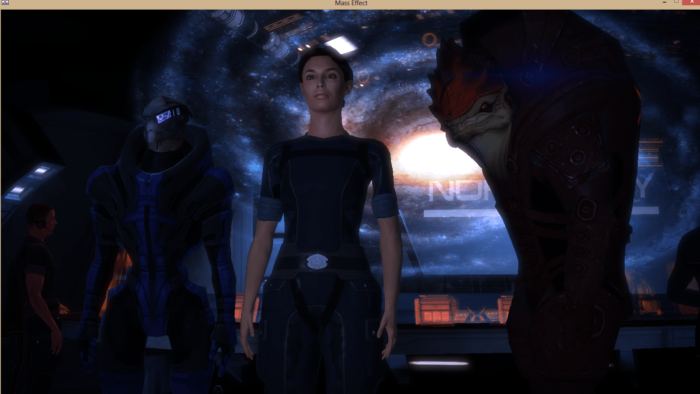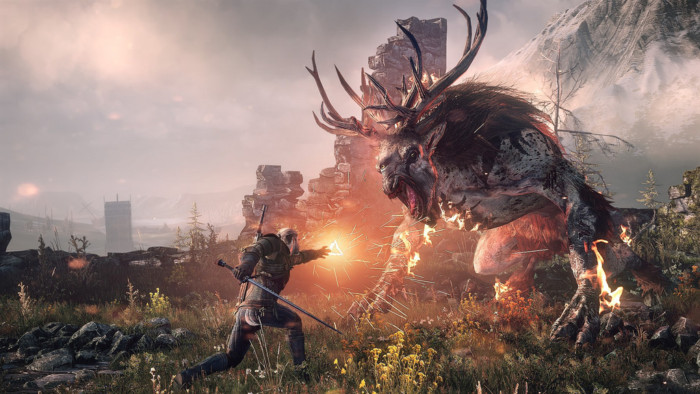Has open world gaming met its limits?
I beat a man to death with a baseball bat and steal his car, then squeal down the highway, earning the ire of the Los Santos Police Department as they take off after me. I’m rammed into the river, and shot to death as I surface for air.
That is the kind of wild, exhilarating experience that can be created in the realm of open world games. From the thrill of psychopathically flying in the face of the law and accepted social norms as in the above GTA 5 example, to the fantastical power trip of single-handedly decimating an Orcish army in Shadow of Mordor, open world video-games are a rich and powerful tool in the language of game design and innovation.

Image: BagoGames, Flickr
They allow us to engage ourselves more deeply with the worlds presented, and in so doing open up complex new avenues and methods for game developers to explore the storytelling and cultural potential of videogames as a medium. Massive Triple-A projects like The Witcher 3 have already used open world design to deeply immerse players within the rich worlds of their setting, and in so doing more effectively ask the questions the developers are posing: “How does one live morally and effectively in a world of absurdity, violence, brutality, with all the nihilism and cruelty of Medieval Europe?”
By dropping the player in a sandbox and saying “do as thou wilt”, and allowing players to stumble upon these questions and answer them in their own unique ways themselves, these open worlds let us live the questions the developers have in mind, rather than simply being asked them, which can be a far more effective way to communicate a thematic message.
While open world games have undoubtedly helped the industry grow and expand in recent years and reach a wider and more diverse audience, there blows a worrying wind that should temper the unqualified enthusiasm
All this is without mentioning the sheer entertainment value of having a massive toy set full of incredible detail and resolution and being given the freedom to explore the various extremes and highlights of the human experience in a consequence free environment. More than this simply allowing for fun and enjoyable experiences, as the medium matures, this tool that presents a unique sense of freedom may become a crucial means by which players can explore and answer the question of who they are as people.
And yet, while open world games have undoubtedly helped the industry grow and expand in recent years and reach a wider and more diverse audience, there blows a worrying wind that should temper the unqualified enthusiasm and optimism most people within the industry seem to feel towards open world video-games. To quote the cliché, there is such a thing as too much of a good thing, and even the most benign elements might be toxic when not used in moderation. Open world elements are not an exception.

Image: Ryan Somma, Flickr
For one, while genres and forms that give players freedom to explore and experiment can be a rich and powerful way to communicate themes, absolute agency and unrestricted movement is not the only, and not always the most effective way to communicate a message. In many cases, restricting the player’s choices can help create scenarios where a theme is more effectively communicated and a question posed. By creating a paradigm where exploration is excessively prized over a well-crafted and directed experience and a set of limited choices, we ironically limit the artistic and thematic potential of video-games as a medium.
Take for example the classic Atari game Missile Command, a game which beautifully and succinctly captures the horror of nuclear war in 8-bit graphics. One of the key ways it critiques the Cold War paradigm of Mutually Assured Destruction is by pointedly refusing to add any sort of winning scenario for the player, and in so doing it makes a simple but powerful statement about nuclear war: no one wins. Or, to use a more contemporary example, Mass Effect’s comment about the sacrifices made in war and the loss of friends in the line of duty, as painfully highlighted in that choice on Virmire between saving Ashley or Kaidan, would not have been nearly as effective if an option existed for players to save both characters.
As a form of art and a new medium for exploring the boundaries of human experiences, we also need to acknowledge the limitations of the tools we use
If we don’t acknowledge the limits and boundaries of open world gaming as another tool in the developer’s kit, and merely play cheerleader for open world gaming as objectively “good”, the industry will suffer in its misguided attempts to cram elements of exploration and open world traversal in games that neither require, nor even benefit from them. Imagine the absurdity of trying to cram open world traversal into a game like Candy Crush, or FIFA.
We’ve already seen examples of misguided attempts to cram mechanics and systems where they don’t belong to the detriment of games – for example, online multiplayer, which has become something of a whipping boy for gamers who bemoan it being shoved into games where it doesn’t belong. Cases in point Mass Effect Andromeda and Spec Ops the Line. This in turn harms the overall product by draining resources away from the key mechanics and forms of engagement that actually matter.

Image: BagoGames, Flickr
As we as an industry move forward in our attempts to increase the prestige of gaming, as not merely a form of entertainment and amusement, but also as a form of art and a new medium for exploring the boundaries of human experiences, we also need to acknowledge the limitations of the tools we use. Thus we must acknowledge that the open world video-game is not necessarily the ideal model.

Comments